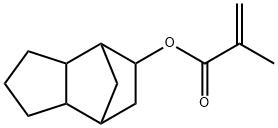Trolox
Synonym(s):Trolox
- CAS NO.:53188-07-1
- Empirical Formula: C14H18O4
- Molecular Weight: 250.29
- MDL number: MFCD00006846
- EINECS: 258-422-8
- SAFETY DATA SHEET (SDS)
- Update Date: 2024-12-18 14:08:57

What is Trolox ?
Description
Trolox (53188-07-1) is a water soluble derivative of vitamin E. Displays antioxidant and radical scavenging activities.1 Prevents lipid peroxidation induced by CYP2E1 in Hep G2 cells.2 Trolox inhibits peroxynitrite-mediated oxidative stress and apoptosis in rat thymocytes.3
Chemical properties
white to fainly beige crystalline powder
The Uses of Trolox
Trolox is a Vitamin E analog that also maintains the antioxidant capabilities which Vitamin E shows. Neuroprotective product.
The Uses of Trolox
An antioxidant derived from water-soluble vitamin E
What are the applications of Application
Trolox is an antioxidant derived from water-soluble vitamin E
Definition
ChEBI: A chromanol that is 6-hydroxychromane which is substituted by a carboxy group at position 2 and by methyl groups at positions 2, 5, 7, and 8. A cell-permeable, water-soluble analogue of vitamin E, it is used as a standard for measuring the antioxidant capa ity of complex mixtures.
What are the applications of Application
Trolox is a cell-permeable, water-soluble derivative of vitamin E with potent antioxidant properties. lt is commonly used as a standard or positive control in antioxidant assays. In addition, trolox is used to assessthe role of oxidative injury in processes like neuronal cell death and aging. It is effective as adjunctivetherapy in the treatment of certain cancers.
General Description
(±)-6-Hydroxy-2,5,7,8-tetramethylchromane-2-carboxylic acid (Trolox) exhibits radical scavenging and antioxidant activities.
Mechanism of action
Trolox can protect against oxidative stress, genotoxicity and inflammation induced by CS through ROS scavenging mechanism, and serve as a potential antioxidant prevention strategy against oxidative injury of ATII cells in CS-related lung diseases.
storage
Store at +4°C
References
1) Massey et al. (1990), Free radical damage in neonatal rat cardiac myocyte cultures: effects of alpha-tocopherol, Trolox and phytol; Free Radic. Biol. Med., 8 449 2) Chen et al. (1998), Cytotoxicity and apoptosis produced by cytochrome P450 2E1 in Hep G2 cells; Mol. Pharmacol., 53 638 3) Brookes et al. (1996), Trolox inhibits peroxynitrite-mediated oxidative stress and apoptosis in rat thymocytes; Arch. Biochem. Biophys., 333 482
Properties of Trolox
| Melting point: | 187-189 °C (lit.) |
| Boiling point: | 313.42°C (rough estimate) |
| Density | 1.0616 (rough estimate) |
| refractive index | 1.4970 (estimate) |
| storage temp. | 2-8°C |
| solubility | Soluble in DMSO (up to 25 mg/ml) or in Ethanol (up to 25 mg/ml). Also soluble in Water at alkalinepH. |
| form | Crystalline Powder |
| pka | 3.35±0.20(Predicted) |
| color | White to faintly beige |
| BRN | 1384051 |
| Stability: | Stable for 1 year from date of purchase as supplied. Solutions in DMSO or ethanol may be stored at -20° for up to 1 month. |
| InChI | InChI=1S/C14H18O4/c1-7-8(2)12-10(9(3)11(7)15)5-6-14(4,18-12)13(16)17/h15H,5-6H2,1-4H3,(H,16,17) |
| CAS DataBase Reference | 53188-07-1(CAS DataBase Reference) |
| EPA Substance Registry System | 3,4-Dihydro-6-hydroxy-2,5,7,8-tetramethyl-2H-1-benzopyran-2-carboxylic acid (53188-07-1) |
Safety information for Trolox
| Signal word | Warning |
| Pictogram(s) |
 Exclamation Mark Irritant GHS07 |
| GHS Hazard Statements |
H315:Skin corrosion/irritation H319:Serious eye damage/eye irritation H335:Specific target organ toxicity, single exposure;Respiratory tract irritation |
| Precautionary Statement Codes |
P261:Avoid breathing dust/fume/gas/mist/vapours/spray. P264:Wash hands thoroughly after handling. P264:Wash skin thouroughly after handling. P280:Wear protective gloves/protective clothing/eye protection/face protection. P305+P351+P338:IF IN EYES: Rinse cautiously with water for several minutes. Remove contact lenses, if present and easy to do. Continuerinsing. |
Computed Descriptors for Trolox
| InChIKey | GLEVLJDDWXEYCO-UHFFFAOYSA-N |
| SMILES | C1(C)(C(O)=O)OC2=C(C)C(C)=C(O)C(C)=C2CC1 |
New Products
(S)-3-Aminobutanenitrile hydrochloride 4-Methylphenylacetic acid N-Boc-D-alaninol N-BOC-D/L-ALANINOL Tert-butyl bis(2-chloroethyl)carbamate 3-Morpholino-1-(4-nitrophenyl)-5,6-dihydropyridin- 2(1H)-one Furan-2,5-Dicarboxylic Acid Tropic acid 1-Bromo-3,5-Di-Tert-Butylbenzene S-2-CHLORO PROPIONIC ACID ETHYL ISOCYANOACETATE 2-Bromo-1,3-Bis(Dimethylamino)Trimethinium Hexafluorophosphate 4-IODO BENZOIC ACID 3-NITRO-2-METHYL ANILINE 1-(2,4-DICHLOROPHENYL) ETHANAMINE (2-Hydroxyphenyl)acetonitrile 4-Bromopyrazole 2-(Cyanocyclohexyl)acetic acid 4-methoxy-3,5-dinitropyridine 1-(4-(aminomethyl)benzyl)urea hydrochloride 2-aminopropyl benzoate hydrochloride diethyl 2-(2-((tertbutoxycarbonyl)amino) ethyl)malonate tert-butyl 4- (ureidomethyl)benzylcarbamate Ethyl-2-chloro((4-methoxyphenyl)hydrazono)acetateRelated products of tetrahydrofuran







![tert-butyl 6-hydroxy-2-azaspiro[3.3]heptane-2-carboxylate](https://img.chemicalbook.in/CAS2/GIF/1147557-97-8.gif)
You may like
-
 Trolox, 97% CAS 53188-07-1View Details
Trolox, 97% CAS 53188-07-1View Details
53188-07-1 -
 6-Hydroxy-2,5,7,8-tetramethylchroman-2-carboxylic Acid CAS 53188-07-1View Details
6-Hydroxy-2,5,7,8-tetramethylchroman-2-carboxylic Acid CAS 53188-07-1View Details
53188-07-1 -
 (±)-6-Hydroxy-2,5,7,8-tetramethylchromane-2-carboxylic acid CAS 53188-07-1View Details
(±)-6-Hydroxy-2,5,7,8-tetramethylchromane-2-carboxylic acid CAS 53188-07-1View Details
53188-07-1 -
 1975-50-4 98%View Details
1975-50-4 98%View Details
1975-50-4 -
 2-HYDROXY BENZYL ALCOHOL 98%View Details
2-HYDROXY BENZYL ALCOHOL 98%View Details
90-01-7 -
 2-Chloro-1,3-Bis(Dimethylamino)Trimethinium Hexafluorophosphate 221615-75-4 98%View Details
2-Chloro-1,3-Bis(Dimethylamino)Trimethinium Hexafluorophosphate 221615-75-4 98%View Details
221615-75-4 -
 14714-50-2 (2-Hydroxyphenyl)acetonitrile 98+View Details
14714-50-2 (2-Hydroxyphenyl)acetonitrile 98+View Details
14714-50-2 -
 118753-70-1 98+View Details
118753-70-1 98+View Details
118753-70-1